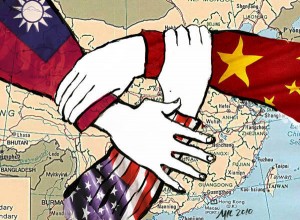Tensions Escalating in East Asia with US Freedom of Navigation Operations

All Global Research articles can be read in 51 languages by activating the “Translate Website” drop down menu on the top banner of our home page (Desktop version).
Visit and follow us on Instagram at @crg_globalresearch.
***
Naval tensions continue to rise in East Asia. Recent American incursions into the Chinese maritime zone have raised concerns among security experts around the world. Another “freedom of navigation” operation has been carried out along the coast of Taiwan, being strongly repudiated by Beijing. Regardless of any legal aspect of such activities, this type of operation tends to unnecessarily escalate international tensions and should be avoided by any nation committed to global peace.
On Thursday, Beijing accused the US of being the main cause of friction in the Taiwan Strait. According to a statement from the Chinese Army, “The US is the biggest destroyer of peace and stability (…) and the biggest maker of security risks across the Taiwan Strait”. The Army spokesman also mentioned that the troops of the People’s Liberation Army Eastern Theater Command are ready to respond to all foreign threats and provocations, defending Chinese sovereignty and territorial integrity. This Command is the Chinese Army’s unit responsible for the security of the Taiwan Strait, which is the coastal strip that separates mainland China from the autonomous island.
The statement was a response to the presence of an American warship in the region this week – the seventh to cross the Taiwanese waterway in 2021. The Arleigh Burke-class guided missile destroyer, USS Benfold, sailed through the Strait on Wednesday, carrying out an operation that, according to a US Navy statement, shows Washington’s commitment to freedom of navigation in the Indo-Pacific, as guaranteed by the rules of international maritime law. This same ship performed a similar maneuver two weeks ago when it navigated through the South China Sea, near the Paracel Islands, which are a disputed territory historically claimed by China (which is why the operation was considered a territorial violation by Beijing).
These cases are not isolated incidents. The so-called “freedom of navigation operations” have become a frequent practice in American naval strategy. Such operations are maneuvers performed by military vessels in a “peaceful” way in tense and disputed maritime zones. The aim is supposedly to “guarantee freedom of navigation”, but in practice this tactic affronts the interests of the nations involved in local disputes. Countries that dispute the coasts consider the operations as territorial violations, which generates more tensions and conflicts. There is no contribution to peace and no guarantee of freedom in this strategy – just unnecessary displays of power and invasions of historically disputed territories.
Particularly on the Chinese coast, the US Navy has exponentially increased the frequency of its operations. Since 2016, more than 30 US vessels sailed within 12 nautical miles of China-controlled islands in the South China Sea. In the Taiwan Straits, the situation is analogous: in 2019, American ships navigated the region on nine occasions; last year, there were fifteen operations; this year, seven cases have been reported so far.
The scenario that is forming is one of encirclement campaign, with American military vessels constantly surrounding the Chinese coast. The aim is to prevent the Chinese government from gaining any real influence in its own maritime zone, obstructing territorial claims, and making Chinese sovereignty unfeasible in the local islands. In addition, there is an intimidating factor, with Washington’s most modern warships showing force in that region.
Taiwan has enhanced its importance in American foreign policy. To harm China, Washington has strengthened its cooperation with the autonomous island. Last month, Raymond Greene, deputy head of the de facto embassy of the American Institute in Taiwan, said: “The United States no longer sees Taiwan as a ‘problem’ in our relations with China, we see it as an opportunity to advance our shared vision for free and open Indo-Pacific and also as a beacon to people around the world who aspire for a more just, safe, prosperous, and democratic world”. It is possible that cooperation will evolve to a more advanced stage, perhaps with formal US diplomatic representation in Taipei – which will certainly be responded by China.
As declared in Wednesday’s statement, the Chinese armed forces are willing to act promptly to neutralize any US maneuver classified as a threat. On several occasions in recent months, American ships navigating the South China Sea have been intercepted by Chinese vessels that forced foreign forces to retreat. Certainly, Beijing will have less tolerance for foreign operations and interceptions will become more frequent. In addition, the Chinese presence abroad is expected to grow significantly, especially in the Caribbean and other regions historically occupied by the US Navy, in response to the US presence in Asia. Countries allied to Washington, such as Japan, can also have their coastlines visited by Chinese ships and, with that we will have the perpetuation of naval tensions.
*
Note to readers: Please click the share buttons above or below. Follow us on Instagram, @crg_globalresearch. Forward this article to your email lists. Crosspost on your blog site, internet forums. etc.
Lucas Leiroz is a research fellow in international law at the Federal University of Rio de Janeiro.
Featured image is from US-China Perception Monitor

